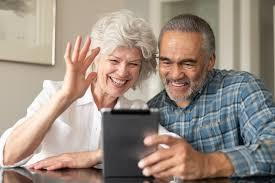
Healthy Friendliness during this pandemic amidst so much angst, worry and anxiety, we are told to practice ‘social distancing’. Reflecting upon what the term means, I asked, Is the United States socially distant from Iran? My immediate response was, Of course!” Then I was asked, Is the United States socially distant from Australia? My response was an immediate, No! I do not need to see or even hear my Australian acquaintances to know they are part of my life. Yet Australia is much further away from the United States than Iran is. Iran is 6,327 miles away while Australia is 9,437 miles away from the US. How interesting that I perceive a nation ‘closer’ to the United States than one that is not as physically distant.
During this pandemic, ‘social distancing’ has become a term for maintaining a safe physical distance. Yet the ultimate practice of social distance is isolation which for many generates stress, worry, and even depression. Prior to the virus, we knew how to socially distance someone while standing right next to them. No wonder anxiety levels are up.
I am not suggesting to stop the critical health practice of physical distancing. Unless we are a suited-up health professional, it is best to stay out of the range of people who are sneezing, coughing and those we know who have the virus. However, when physically distant, we do not have to remain socially distant from each other. The conditions we are facing, more than ever, require us to be socially close while protecting our health.
I was reminded of this at 8:00 p.m. last Thursday as I stepped outside into the howls piercing the air. Shouts were being shot to the stars from homes as far as I could hear. The cries and hollering felt more like a thunderous chant, “We are here.” I could only smile at the message of so many was bests wishes to all who could hear. Suddenly my worries of the day were carried away as I stood outside attempting to bay at the moon. As I gave it a half-hearted try with a soft shout, I joined my neighbors and those in nearby neighborhoods. All the human barking as we attempted to mimic wolves and creatures who travel at night reminded me that we are never alone, regardless of the physical distance.
So let’s practice healthy friendliness. Let’s stay socially close to help protect each other’s health as we keep our physical distance. It makes no sense to physically be with our loved ones if we have been around people who may have been exposed to the COVID19 virus. Instead, we can call them or even stop by to wave through a window. If our loved ones are ill, we need to let them know how better we feel by just hearing their voice or seeing their face.
Although healthy friendliness requires some flexibility, the return is worth far more than the effort. It was a joy to drop off some food and drawing material for my son and grandchildren. A young friend of my grandson with whom I had a ritual greeting when I visited was ready for me. The routine was for him to run up and punch me. Being only 5 years old, I would punch him back and with laughter slowly fall to the ground. When saying hello after delivering some food to my son, my young friend stared at me through an open door, knowing I could not come inside. Watching his smile turn into a frown, I shook my fist at him and then threw him a punch. He grinned and leaning back gave a swift karate kick at me in the air. Feigning a severe kick in the gut, I slowly fell down to the laughter of him and his parents.
We do not need to be physically nearby to create smiles. We can send cards. We can leave gifts on a porch. After a dear friend of mine moved away from Colorado we continued our tradition. After all these years instead of the restaurant where we used to meet, we still find time to share a cup of coffee and chat over the phone instead of a restaurant table. We started the calls to stay close.
Odd how these times demand us to stay close even while needing to be physically distant. We are being forced to accept what is as-is. Accepting what is as is involves dealing with what is happening, not giving up. It is assessing what causes and conditions are at play without an emotional story. It is a bit like the serenity prayer of Rheinhold Niebuhr asking for the “the serenity to accept the things I cannot change, the courage to change the things I can, and wisdom to know the difference.
Even though we cannot change the past or control the future, we can choose our reaction to the events in motion. After taking note of conditions and circumstances, we can consciously choose how we want to respond. When uneasy or filled with anxiety we can make a choice to respond with friendliness. We can ask a smiling buddy to help by thinking of someone in our life who was always there for us. Remembering someone who stood by us or encouraged us is a way to return to a space of calm. If you can recall their face a smile, you have a smiling buddy with you in your heart. Listen to your smiling buddy and practice some friendliness. Doing so you can, if only for a moment, relax and just be with what is. Then go about your day asking your smiling buddy how to best care for yourself and others. Then take a moment during the day to practice healthy friendliness.
-Carol O’Dowd, MPA, MDIV, MI, RP
Prajna Healing Arts
